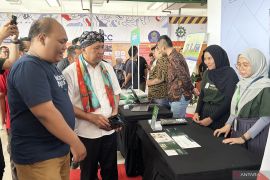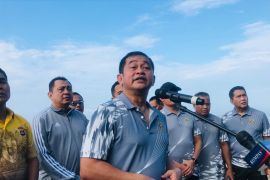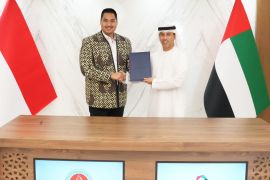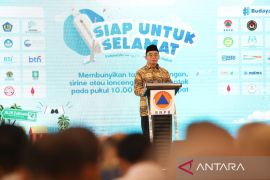As stipulated in the National Medium-Term Development Plan 2015-2019 (RPJMN 2015-2019), the government of Indonesia, through the Ministry of National Development Plan/National Development Planning Board (Bappenas), has formulated a plan to develop two thousand self-supporting villages by 2019.
"In accordance with our national development plan, we are targeting to develop about two thousand self-supporting villages by 2019," Bappenas Chief Sofjan Djalil stated.
Speaking at a function to launch the 2014 Village Development Index (VDI) at the Bappenas building in Jakarta on Tuesday, Djalil remarked that the RPJMN 2015-2019 has mandated a target of reducing the number of backward villages by five thousand and increasing the number of self-supporting villages by two thousand.
He noted that the development of rural areas was outlined in the Nawa Cita and has a strategic position in the RPJMN 2015-2019.
To achieve the target set in the RPJMN, Djalil emphasized the importance of the VDI as a reference for stakeholders to formulate rural development policies and plans.
He said it was recorded in the VDI that of all 74,094 villages across the country, 20,167 fell under the backward category, 51,055 were developing villages, and 2,904 self-supporting villages.
"In the future, the VDI will continue to be refined along with improving the indicators listed in the Village Potential Data to better describe the actual condition of the villages," he noted.
The government has launched the Universal Rural Development Movement to encourage development in more villages across the country.
In a bid to develop more than 74 thousand villages across the country, the government has since April 2015 disbursed rural development funds to trigger a national movement for developing rural areas across the country.
The disbursement in April was part of the funds worth Rp20.7 trillion allocated from the state budget this year in a bid to offer a direct boost to rural economic growth, including support to small businesses in the villages.
Rural, Disadvantaged Regions and Transmigration Minister Marwan Jafar has also said the rural development funds are expected to help realize the RPJMN 2015-2019 and the Presidential Regulation No. 2 of 2015 to reduce the number of backward villages by 5 thousand and to increase the number of self-supporting villages by two thousand.
He noted that President Jokowi has instructed the Ministry of Rural, Disadvantaged Regions and Transmigration to set its focus on infrastructure development in backward villages.
"Especially in more than one thousand villages in the border areas, the ministry will set its focus on the infrastructure development there in accordance with the mandate of Law No. 6 of 2014 on rural development," Marwan remarked.
He added that in the future, his ministry will also prioritize to implement its development program for 39 thousand disadvantaged villages and 17.2 thousand most disadvantaged villages.
He expressed hope that the rural development funds worth Rp20.7 trillion can be used optimally to develop self-supporting villages across the country.
"We are serious about developing self-supporting villages by involving all public elements to build productive facilities and infrastructure such as to establish Village-owned Enterprises (BUMDes)," the minister noted.
In the meantime, Rural, Disadvantaged Regions and Transmigration Ministrys Director General for Rural Area Development Johozua Max Yoltuwu has explained that the BUMDes will be developed in several villages across the country.
"For this year alone, the ministry will use the funds to establish at least 40 thousand BUMDes," Max said.
He noted that besides being used for physical development, the funds can be utilized to empower the rural communities through training programs to improve their ability, including for the economic business group.
Max explained that the poverty in disadvantaged villages can be addressed through the proper utilization of funds to create self-supporting villages and to raise the quality of living of the rural communities.
"Self-supporting villages are expected to meet their own aspects of social needs, basic infrastructure, basic facilities, and public services," he remarked.
According to Coordinating Minister for Culture and Human Development Puan Maharani, rural development will be carried out by prioritizing the villages based on the categories of backward, remote, and frontier that share their border with other country.
"Under the rural development program, the government will prioritize the backward, remote, and frontier villages, which are known as villages with 3T (Tertinggal, Terpencil, Terdepan) category," Puan noted here recently.
She added that the development of villages in the 3T category is on top priority of the Jokowi governments development program.(*)
Reporter: Otniel Tamindael
Editor: Heru Purwanto
Copyright © ANTARA 2015











